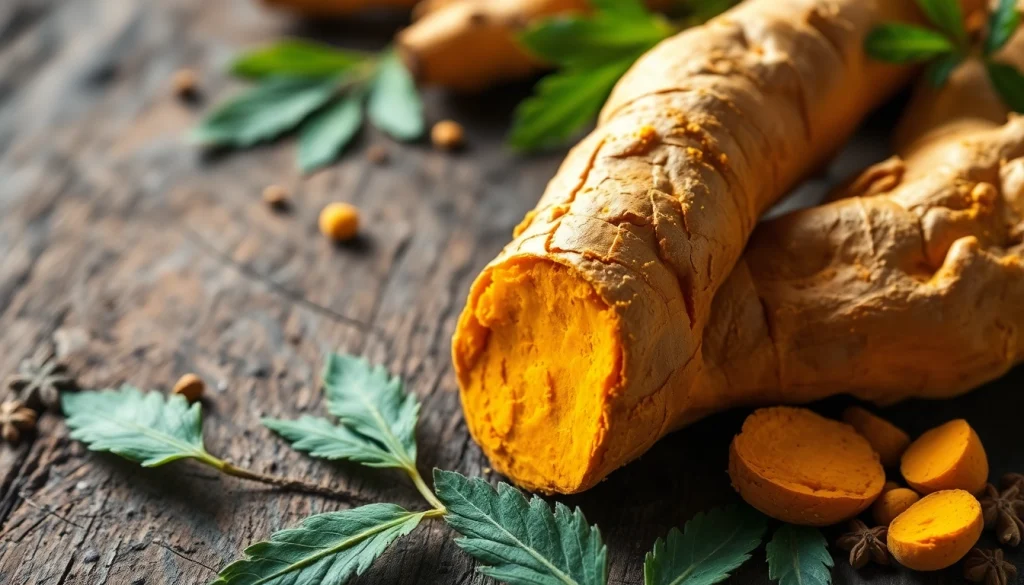Understanding Turmeric Root and Its Origins
What is Turmeric Root?
Turmeric, scientifically known as Curcuma longa, is a flowering plant belonging to the ginger family (Zingiberaceae). Its rhizome, or root, is well-known for its vibrant golden-yellow color and is a crucial ingredient in many culinary dishes and traditional medicines across the globe. Indigenous to South Asia, the root has been used for centuries not just as a spice in cooking but also for its myriad health benefits. Its principal active compound, curcumin, is often credited with many of its purported medicinal properties. As more health enthusiasts and chefs discover the wonders of the turmeric root, its popularity continues to surge.
Historical Uses of Turmeric in Traditional Medicine
Turmeric has a rich history in traditional medicine systems, particularly in Ayurveda, which dates back over 5,000 years in India. In Ayurvedic practices, turmeric has been utilized for its anti-inflammatory, antiseptic, and antioxidant properties. It was often used to treat various ailments ranging from digestive issues to skin conditions. In traditional Chinese medicine, turmeric was also seen as a vital herb for promoting blood circulation and alleviating pain. Its use extended beyond just healing, as it also played a ceremonial role in weddings and other cultural events.
Geographical Cultivation and Harvesting Practices
Turmeric is primarily cultivated in tropical and subtropical climates, with India being the largest producer, accounting for about 80% of global production. Other significant producers include countries like Bangladesh, Myanmar, and Thailand. The root is typically harvested about 8 to 10 months after planting, once the leaves of the plant have dried out and turned yellow. Post-harvest, the roots undergo a meticulous processing routine, which includes washing, boiling, drying, and grinding to produce the turmeric powder that is familiar in kitchens worldwide.
Health Benefits of Turmeric Root
Anti-Inflammatory and Antioxidant Properties
One of the most significant health claims associated with turmeric root is its potent anti-inflammatory action. Curcumin, the primary active ingredient in turmeric, has been shown in various studies to inhibit several molecules that play a role in inflammation, making it a compelling natural alternative for conditions like arthritis and other inflammatory diseases. Moreover, turmeric is replete with antioxidants that neutralize free radicals in the body, a critical factor in preventing cellular damage and slowing aging.
Turmeric Root and Digestive Health
The digestive benefits of turmeric have been recognized for centuries. Its anti-inflammatory properties can help soothe the digestive tract, supporting conditions such as irritable bowel syndrome (IBS) and ulcers. Turmeric is also believed to stimulate bile production, which aids in digestion, making it a fantastic companion to fatty foods. Traditional uses often include incorporating turmeric into teas and tonic beverages designed to boost digestive health.
Potential Benefits for Mental Well-Being
Emerging research has drawn a fascinating connection between curcumin and mental health. Various studies have suggested that curcumin may assist in alleviating symptoms of depression and anxiety. The compound works by increasing levels of brain-derived neurotrophic factor (BDNF), a protein linked to cognitive function and mood regulation. Consuming turmeric regularly may thus offer a simple, natural way to enhance mood and mental resilience.
Culinary Applications of Turmeric Root
How to Prepare Fresh Turmeric Root
Fresh turmeric root can be used in various culinary applications, adding color, flavor, and health benefits to dishes. When preparing fresh turmeric, it’s crucial to handle it properly to avoid staining fingers and surfaces. The root can be washed and peeled with a vegetable peeler or the back of a spoon. Once prepared, it can be grated into meals, sliced for infusions, or blended into smoothies.
Recipes Featuring Turmeric Root
There are countless ways to incorporate turmeric root into your diet. Here are a few delightful recipes:
- Golden Milk: A warming drink made with turmeric root, coconut milk, and a dash of black pepper.
- Turmeric-Infused Rice: Cook rice with grated turmeric root and spices for a colorful side dish.
- Tumeric Stir-Fry: Add fresh turmeric to your favorite vegetables and proteins for an antioxidant-rich meal.
Pairing Turmeric with Other Ingredients
Turmeric pairs excellently with various ingredients. For enhanced absorption of curcumin, it’s recommended to combine turmeric with black pepper, which contains piperine, a compound known to increase the bioavailability of curcumin. Incorporating fat, such as coconut oil or ghee, can further enhance absorption. Additionally, turmeric’s flavor profile complements various spices, especially in Indian and Southeast Asian cuisines.
Choosing Quality Turmeric Root Products
How to Select Fresh Turmeric Root
When choosing fresh turmeric root, look for firm, smooth roots without any soft spots or blemishes. Fresh turmeric should feel heavy for its size and have a potent aroma. For powdered turmeric, opt for organic varieties to ensure the absence of additives and contaminants.
The Importance of Organic Certification
Opting for organic turmeric root is crucial for various reasons. Organic standards prohibit the use of synthetic pesticides and fertilizers, ensuring the product is cultivated in healthier soil and adhering to sustainable practices. Moreover, organic turmeric typically offers better flavor, quality, and nutritional benefits, further enhancing your food preparation.
Storage Tips for Preserving Freshness
Fresh turmeric root can be stored in the fridge wrapped in a paper towel and placed in a resealable bag for up to two weeks. If you have more than you can consume in that time, consider freezing it. Simply wash, peel, and cut the root into smaller pieces before placing it in an airtight container. Frozen turmeric can last for several months and will retain much of its nutritional value.
Conclusion: Incorporating Turmeric Root into Your Lifestyle
Daily Dosage and Consumption Tips
Incorporating turmeric root into your daily regimen can be beneficial for health and wellness. A standard dosage for curcumin supplementation usually falls around 500 to 2000 mg per day, but using fresh turmeric in cooking can be a flavorful alternative. Starting with small amounts and gradually increasing based on taste and tolerance can be an excellent way to integrate this superfood into your lifestyle.
Supplementation vs. Natural Sources of Turmeric Root
While supplements can provide concentrated doses of curcumin, using natural sources of turmeric offers additional dietary benefits. Fresh turmeric root contains other beneficial compounds and fibers that are not present in isolated supplements. Thus, focusing on incorporating natural sources into your meals can be a holistic way to reap the benefits without reliance on pills.
Future Directions in Turmeric Research
The ongoing research into turmeric continues to unveil its myriad benefits, and interest in natural remedies points towards a promising future. As new studies emerge, we can expect to learn more about the expansive potential of turmeric root and its applications in both culinary and medicinal fields. Staying updated with scientific findings will ensure that we harness turmeric’s full benefits for health and wellness.






